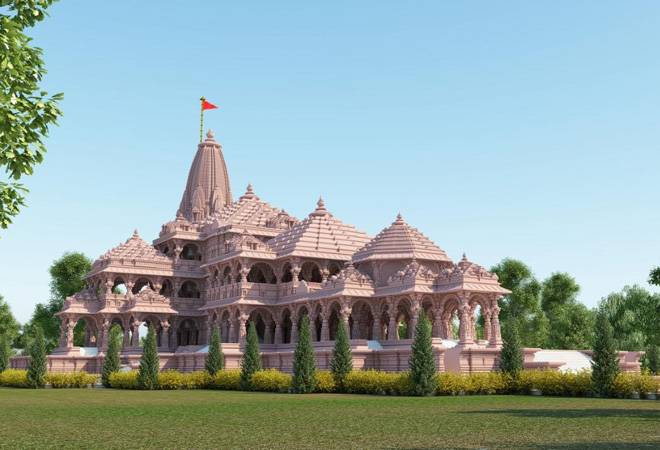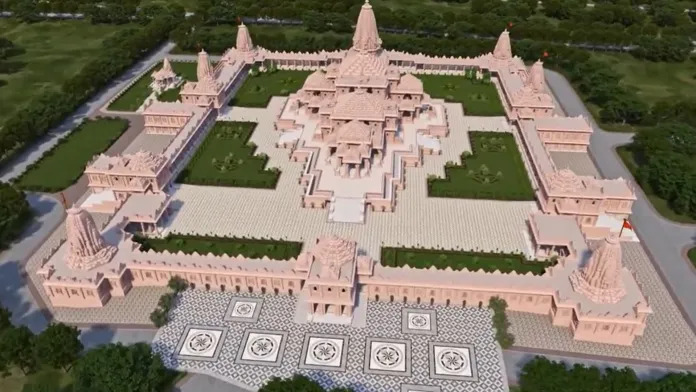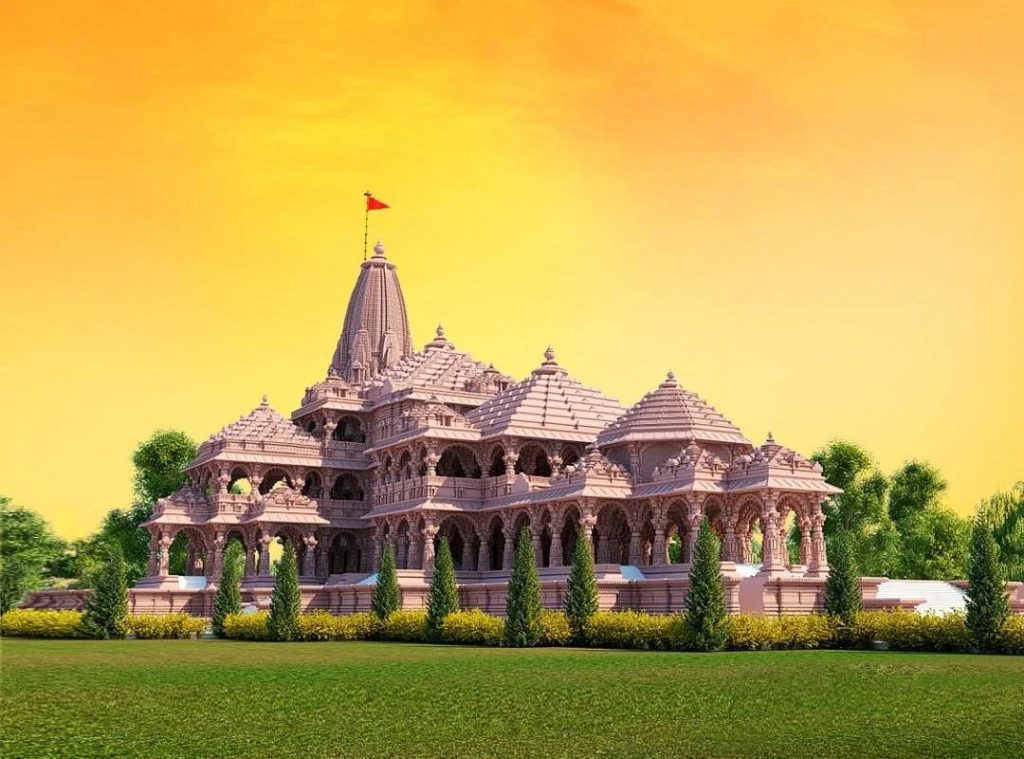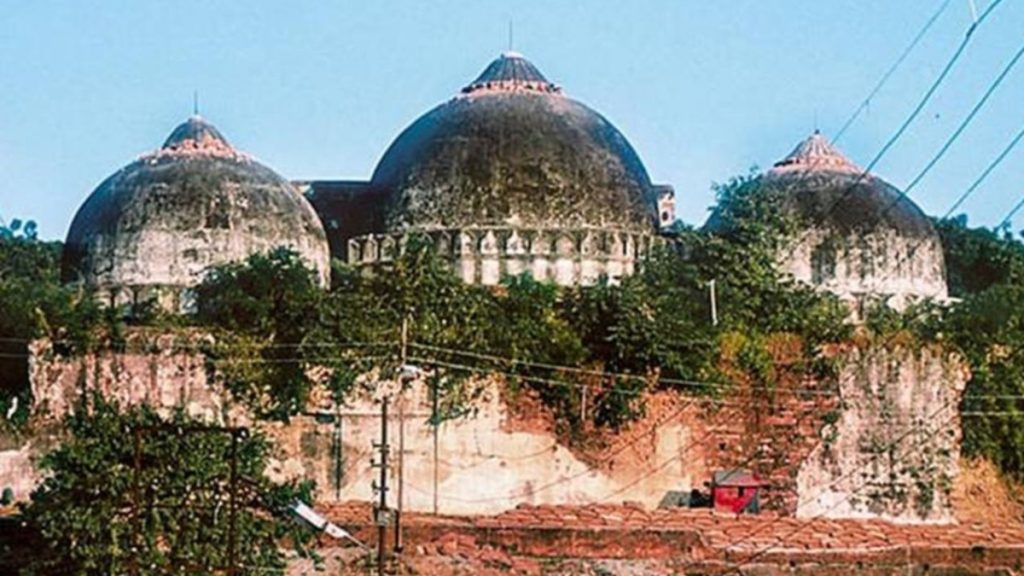Are You Want to Know More Information on the Ayodhya Ram Mandhir? Then, you must read this blog post. Let’s get into detail about the latest blog post – Latest News, Updates On Ayodhya Ram Mandhir-Ram Janmabhoomi.
1. Introduction
Rama, who is thought to be the seventh manifestation of the Hindu deity Vishnu, is said to have been born at the location known as Ram Janmabhoomi, which translates to “Birthplace of Rama.” According to the Ramayana, Rama was born in a city known as “Ayodhya” on the Sarayu River’s banks. Ayodhya now is located in the Uttar Pradesh state of northern India.
Widespread Hindu-Muslim violence broke out in 1992 after Hindu nationalists destroyed the Babri Masjid. The property was the subject of a legal issue that made it to the Indian Supreme Court, which heard cases involving title disputes from August to October 2019.
The Supreme Court mandated that a trust be given the site to actively erect a Hindu temple by November 9th, 2019.
2. Opening Date
According to Mr. Rai, they plan to seat Lord Ram in the sanctum sanctorum by the Makar Sankranti festival in January 2024, and they have slated the completion of the temple’s construction for December 2023.
3. Ayodhya Ram Mandir Bhumi Pooja ceremony
Prime Minister Narendra Modi, performed the Bhumi Poojan ceremony and set the temple’s foundation stone on August 5, 2020, following the Supreme Court’s decision.

4. Ayodhya Ram Mandir Architecture
The Sompuras prepared a new design in 2020. that differed slightly from the original in accordance with Vastu and the Shilpa shastras. The temple will be 360 feet in length, 235 feet in width, and 161 feet tall. The temple complex will be the third-largest Hindu shrine in the world when it is finished.
| Temple Height | 161 feet tall |
| Temple Length | 235 feet in width |
| Temple Width | 360 feet in length |
5. Temple Build-up Area
The area of the temple is 54,700 square feet or around 2.7 acres. Nearly 70 acres will make up the whole Ayodhya ram mandhir which can accommodate a million worshippers at once.
Developers will actively develop a complex on 57 acres of property, in addition to the 10 acres where the temple will be erected. The complex will include a prayer hall, a lecture hall, an educational facility, and additional amenities such as a museum and a restaurant.
6. Total Budget
It would probably cost between Rs 1,400 crore and Rs 1,800 crore to build the temple. According to representatives of the Ram Janmabhoomi Teerth Kshetra Nyas, the temple trust is receiving donations totaling between Rs 60 -70 lakh for the construction of the great temple.
7. Ayodhya Ram Mandir Project Construction Company
The trust hired Tata Consulting Engineers as the project management consultant and Larsen & Toubro as the design & build contractor for the construction of the temple in November 2020.

In February 2020, Tata Consulting Engineers and Design Associates Inc. actively entered into additional agreements for the construction of the 67-acre temple complex.
8. Ayodhya Ram Mandir Trust
Each of the trust’s 15 members must be an active Hindu; there will be 6 nominated members and 9 permanent ones.
Permanent participants
i) K. Parasaran acted as Shri Ram Lalla Virajmaan’s representative.
ii) Four religious leaders from various Indian temples
iii) An official of the Nirmohi Akhara
iv) Two eminent residents of the Ayodhya district,
v) one of them is a Dalit
9. Historical Background:
Believers actively believe in ayodhya ram mandhir‘s connection to Lord Ram’s birthplace. The sacred site’s origins trace back to ancient Ayodhya, the capital of the Kosala Kingdom. According to the epic Hindu scripture, the Ramayana, Lord Ram was born to King Dasharatha and Queen Kaushalya in Ayodhya.
10. Ayodhya Dispute
- A political rally on December 6, 1992, led to the active demolition of the Babri Masjid, sparking widespread rioting. Many prior attempts were unsuccessful, and one of them resulted in the 1990 Ayodhya gunfire incident.

- The Allahabad High Court decided a land title case on September 30, 2010. The land of Ayodhya, measuring 2.77 acres (1.12 ha), will be divided into three portions. One-third will go to the representation of Ram Lalla or Infant Rama, as received by the Vishva Hindu Parishad.
- The Uttar Pradesh Sunni Central Waqf Board gets one-third, and the Nirmohi Akhara receives the remaining third. The Archaeological Survey of India discovered temple ruins during site excavation, providing proof to the Indian Supreme Court.
- The Indian government announced the establishment of Shri Ram Janmabhoomi Teerth Kshetra on February 5th, 2020, to rebuild a Ram temple. The Indian government chose Dhannipur, Ayodhya ram mandir, as the new location for constructing a mosque to replace the destroyed Babri Masjid.
11. Controversy of Babri Masjid (Mosque of Babur)
- Babur, the first Mughal emperor of India, established the Mughal empire. Mir Baqi, one of Babur’s generals, actively constructed the Babri Masjid (also known as “Babur’s Mosque”) in 1528 under Babur’s orders.

- In 1813-1814, Francis Buchanan, a surveyor for the East India Company, discovered an inscription on the mosque walls, leading to the widespread notion. According to the local legend, the documentation actively attributes the construction of the mosque to Emperor Aurangzeb. (r. 1658–1707) following the destruction of a Rama temple.
- Babur’s painstakingly detailed life journal, The Baburnama, does not mention the construction of a mosque at Ayodhya or the destruction of a temple for it. Tulsidas’ epic poem Ramcharitmanas and Akbar’s court documents, the Ain-i-Akbari, omit any mention of Rama or his contemporaries.
- The “mosque-temple” allowed both Muslims and Hindus to pray, with Hindus praying outside but within the courtyard. To avoid disagreements, a British governor had a railing built between the two districts in 1857. The argument began in 1949, following India’s independence, when individuals erected a Ram idol within the mosque.
Conclusion
Ayodhya Ram Mandir stands as a testament to the enduring faith and cultural legacy of millions. It represents a triumph of harmony and reconciliation, where a once divisive dispute has now given way to a symbol of unity. With its majestic architecture and profound historical significance, the Ram Mandir continues to inspire awe and reverence, reminding us of the power of faith and the resilience of the human spirit.
Also, Read Our Latest Blog Posts:
- The New Evolution of Telangana Secretariat and The Tallest Ambedkar Statue: Symbol of Equality and Justice
- A Wonderful Drive Trip On Outer Ring Road, Hyderabad
- Brief Info of Regional Ring Road, Hyderabad
- Exploring Hyderabad’s Mobility Valley: The Hub of Innovation and Connectivity
- Do You Know 13 Myths About HMDA Master Plan?
- Properties In Hyderabad
- Agriculture Land Near Hyderabad
- Villas Near Hyderabad
Frequently Asked Questions
Ans: Prime Minister Narendra Modi performed the Bhumi Poojan ceremony and set the foundation stone of the temple on August 5, 2020.
Ans: 1800 Crores is the total Budget of Ayodhya Ram Mandir.
Ans: Ayodhya Ram Temple Built-In total 67 Acres.
Ans: Ayodhya Ram Mandhir is Located in Uttar Pradesh (U.P)
Ans: Shri Ram Janmabhoomi Teerth Kshetra is the trust of Ayodhya Ram Mandir.
Ans: Ayodhya Ram Mandhir is located on the banks of the “Sarayu” River.





































